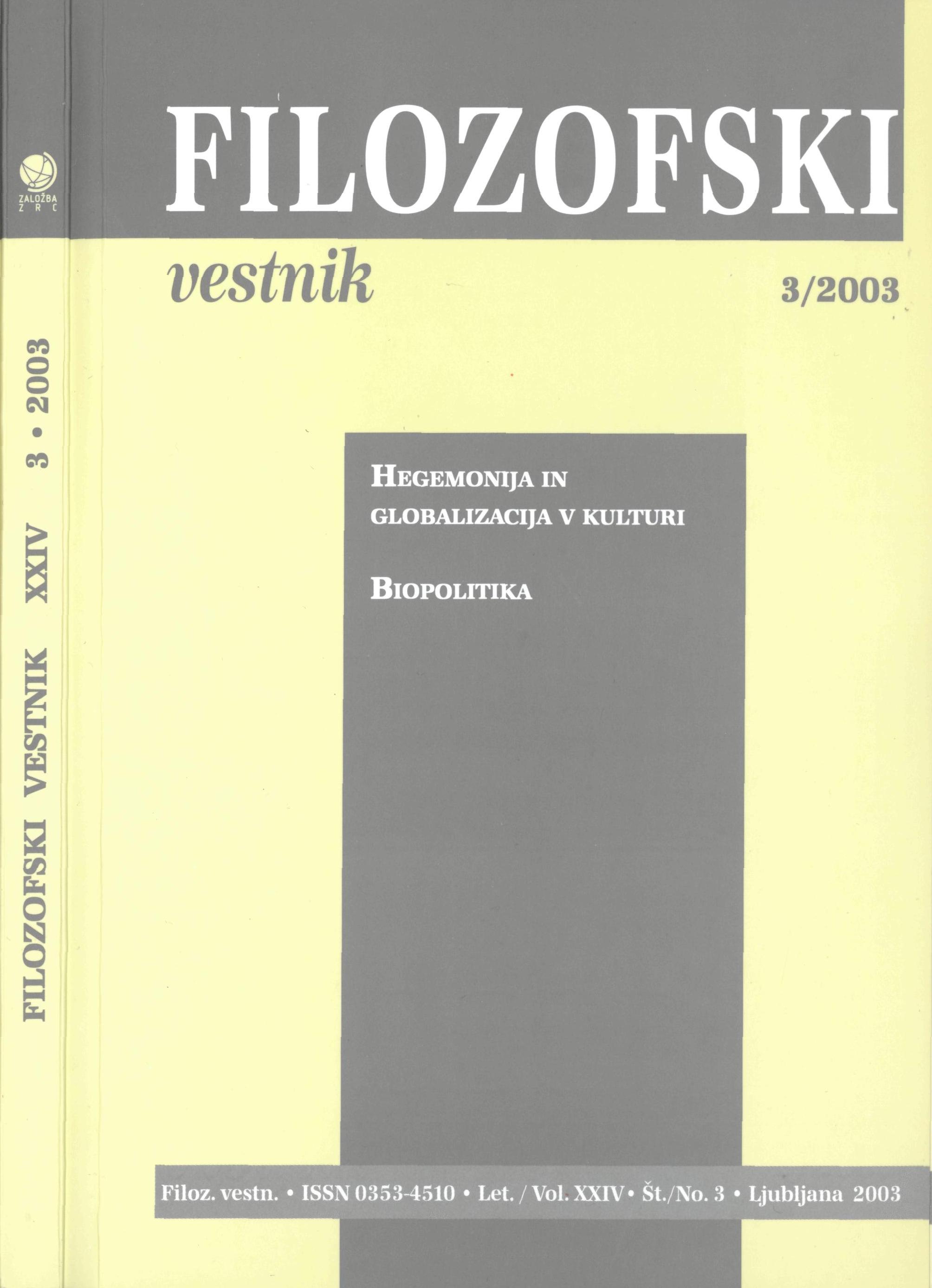Hegemonija in širjenje dominantnih umetnostnih praks
Ključne besede:
hegemonija, vodilna umetnost, umetniška scena, narodPovzetek
Cejo uporabljamo pri obravnavi globalnih kulturnih praks, se hegemonija nanaša na vpliv dominantne nacionalne kulture na podrejeno kulturo. Menjajoči se vzorci kulturne dominacije v umetnosti med Francijo in Združenimi državami med leti 1930 in 1960 bodo služili kot fokus s katerega bomo izpeljali bolj teoretsko poanto glede kulturne hegemonije. Med osrednjimi temami bodo razlogi za nadomestitev francosko utemeljene Pariške šole, kije prevladovala v umetnosti v New Yorku in Parizu v tridesetih letih, z ameriškim ekspresionizmom kot vodilno umetnostno prakso šestdesetih let. Ali takšne spremembe v paradigmah umetnostnih praks v bistvu povzročajo zunanji dejavniki: tehnologija ali politične in gospodarski ali drugi neumetnostni razlogi? V nasprotju s tem pogledom bom trdil, da so prvenstveni dejavniki v razvijajočih se vzorcih dominacije v umetnosti spremembe, kijih povzroča izumljanje novih paradigem, kot je to v znanosti in drugih pomembnih vidikih kulture. Trdim, daje tako vloga hegemonije pri vzpodbujanju sprememb v umetnostnih praksah manj pomembna kot pa nenehen nov tok izumov v umetnosti. Alternativni pogledi Serga Guilbauta, kije razčlenjeval premestitve v francosko-ameriški kulturi v kontekstu politike hladne vojne po Drugi svetovni vojni in Jean-Pierra Salgasa, ki trdi, daje »umetniška scena«, ne pa narodi tista, ki določa katera umetnost postane dominantna, nudijo okvir za razpravo.Prenosi
Podatki o prenosih še niso na voljo.
Prenosi
Objavljeno
2016-01-03
Kako citirati
Carter, C. L. (2016). Hegemonija in širjenje dominantnih umetnostnih praks. Filozofski Vestnik, 24(3). Pridobljeno od https://ojs.zrc-sazu.si/filozofski-vestnik/article/view/3399
Številka
Rubrike
Hegemonija in globalizacija v kulturi
Licenca
Avtorji jamčijo, da je delo njihova avtorska stvaritev, da v njem niso kršene avtorske pravice tretjih oseb ali kake druge pravice. V primeru zahtevkov tretjih oseb se avtorji zavezujejo, da bodo varovali interese založnika ter da bodo povrnili morebitno škodo.
Podrobneje v rubriki: Prispevki





